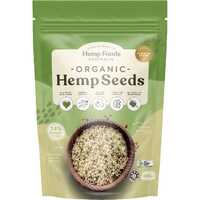Yoga is an ancient practice that continues to experience a dramatic modern resurgence. It involves a series of related disciplines, including several interdependent physical, mental, and spiritual practices. The history of yoga stretches back to the ancient Vedic period in India, and throughout the centuries, it has been incorporated into Hinduism, Buddhism, and Jainism.
Modern yoga, at least in the West, refers to various posture-based physical exercises used for stretching, relaxation, and meditation. For many people, yoga involves the exploration of universal elements through personal application.
Let's take a detailed look at yoga, from its ancient origins to its many varieties and benefits. If you want to incorporate yoga into your daily life, it's important to have the right knowledge by your side.
A Short History of Yoga
Like many subjects with ancient origins, the precise history of yoga is largely unclear. There are two general theories: the linear model, which proposes Vedic origins, and the synthesis model, which speaks of Vedic and non-Vedic elements. Yoga-like practices were first mentioned in the Rigveda, an ancient Indian collection of Vedic Sanskrit hymns. Many of the elements that define modern yoga were mentioned in this text, including concentration, mental observation, breath control, and the notion of ego-sacrifice.
The first evidence of "yoga" as a term was during the 5th to 3rd century BCE, when it was mentioned in the Katha Upanishad. The Yoga Sutras of Patanjali was the first dedicated and most detailed study of the underlying principles of yoga, sometime during the early Common Era. The Middle Ages saw the development of numerous yoga traditions, including the development of Hatha yoga. This novel form of yoga prioritised physical postures and links between material and mental states.
The philosophy and practice of yoga grew from there, with various schools of Hinduism speaking of and applying yoga in unique ways. Initially confined to India, the practice of yoga started to spread when Alexander the Great visited the Indian subcontinent in the 4th century BCE. Yogis and their meditation techniques were referenced in the memoirs of Greek academics, as the Western world started its long fascination with the profound links between mindfulness and physical balance.
It took until the mid-19th century for yoga to develop a large Western audience, however, which is when N. C. Paul published his Treatise on Yoga Philosophy. Swami Vivekananda was the first Hindu teacher to tour the West in the 1890s, with schools like the New England Transcendentalists and Theosophists spreading the ideals of yoga in the decades after. The idea of the "transcendent" slowly shifted from the mind to the body, as a largely materialist Western world looked for new ways to attain enlightenment through physical means.
What we know as yoga today is a modern form of Hatha yoga and posture-based physical fitness. Modern Western postural yoga is a physical activity consisting of asanas, which are particular body postures or sitting meditation poses. These postures are often joined by smooth transitions, and they're also accompanied by breathing exercises and meditation. While asanas were not central to any particular Indian tradition, they are the foundation on which modern yoga practice stands.
Yoga As Exercise
As time went on, the Western world adopted yoga as a set of physical exercises with a broad mental and spiritual focus. Depending on how it's taught, it can either be a purely physical activity or a link between various physical and mental states. Yoga involves much more than stretching and gentle movements, and it also differs largely from common meditation practices. In essence, modern yoga is about balance and control, not just within the body but also between the body, mind, and spirit.
Yoga as exercise was pioneered by Shri Yogendra and Swami Kuvalayananda. Together with their contemporaries, around the turn of the 20th century, they developed asanas, introduced transitions, and expanded the practice with standing poses like the Sun Salutation. The 1950s and 60s were a time of intense development, with teachers visiting from India, various books being published, and yoga schools opening up across the Western world. Modern posture-based yoga continues to rise in popularity, as practitioners and scientists discover the amazing physical and mental health benefits of this ancient tradition.
Along with the focus on physical exercise, yoga is often categorised into the following four paths:
- Karma yoga is about how you act in the world, including your devotion to selfless work.
- Jnana yoga is about intellectual knowledge and practical wisdom through meditative awareness.
- Raja yoga is also known as ashtanga yoga, and it involves an 8-step path from principles to salvation.
- Bhakti yoga is about the worship or love of God, including the spiritual realisation of eternity.
The Many Different Types of Yoga
As you can see, yoga is far from a homogeneous practice. Not only does it involve various physical, mental, and spiritual disciplines, but modern postural forms can also be divided into several schools. From hatha yoga to ashtanga yoga, vinyasa yoga, and kundalini yoga, how you practice yoga has a huge influence on the benefits you're likely to receive.
The following forms of yoga are among the most influential:
Hatha yoga
Hatha means “force”, with this type of yoga using physical activity to restore balance to the body. This form of yoga attempts to harmonise the forces of the body as a way to realise physical potential and heal specific ailments. Hatha yoga includes a wide variety of physical postures and positions, which, when applied, may help you to stay flexible, toned, and agile.
Ashtanga yoga
Ashtanga is a derivative of the word "eight" in Sanskrit, with this structured form of yoga focusing on eight pillars in an effort to promote physical and mental balance. These eight paths are principles, personal discipline, asana and postures, pranayama, withdrawal, concentration, meditation, and salvation.
Vinyasa yoga
Vinyasa has two parts, with Vi meaning "variation" and Nyasa meaning "within prescribed limits". This form of yoga is all about flow, both through physical movements and circulating breath. Vinyasa yoga attempts to replicate the flow of life, with yogis often initiating a particular sequence of postures that transform from childhood to death.
Kundalini yoga
Kundalini is the “yoga of awareness”, and this form of yoga is all about repetition and activation. The Kundalini Shakti is a latent spiritual energy residing at the base of the spine, with postures designed to uncoil this energetic "snake" as energy moves up the body and awakens forces within. Kundalini yoga may be useful for mental issues like anxiety and depression.
Iyengar yoga
Iyengar yoga focuses on physical posture and body alignment. It's all about opening up the body in order to remove blockages and allow energy to flow properly. Different to many other types of yoga, Iyengar yoga utilises specific equipment like yoga blocks and resistance belts in order to perfect poses. This form of yoga has been applied for postural issues and musculoskeletal disorders.
Benefits of Yoga
Practising yoga offers a range of physical and mental health benefits, from improved flexibility and agility to increased mindfulness and better mental health outcomes. The actual benefits experienced depend on numerous factors, including the type of yoga practised and the length and frequency of practice periods.
The following benefits are among the most noteworthy:
Improved flexibility
While yoga is much more than just stretching, people who practise yoga on a regular basis are likely to become much more flexible. Many yoga poses involve pronounced limb extensions, often combined with breathing exercises for an extended period of time. Standard stretching routines can quickly become boring, but fortunately, yoga provides a great alternative that engages the mind along with the body.
Enhanced balance and agility
Along with flexibility, physical balance and agility are obvious benefits of yoga. In many ways, these two forces represent opposite sides of the same coin. While balance is all about equilibrium, agility describes the ability to move quickly and easily between different states. Many yoga exercises focus on balance, with practitioners learning to find their centre and move with intention when required.
Better muscle tone
Performing yoga poses on a regular basis will help to improve your muscle tone, especially as you progress and learn to hold poses for a longer period of time. Some postures provide this benefit more than others, and some yoga classes and books are dedicated to things like muscle tone and weight loss. Unlike interval training and other intensive forms of exercise, yoga can be applied gently to help you avoid muscle strains and injuries.
De-stress and be mindful
Yoga can be a great way to calm your mind and reduce your stress levels over time. Physical exercise is known to impact mental states, especially when it's combined with specific mind-body routines like rhythmic breathing and mindfulness. Lots of people use yoga as a form of meditation, focusing on the movement of their bodies and learning to concentrate without getting caught up in unwanted trains of thought.
If you want to explore yoga and enjoy everything this practice has to offer, Healthy Being has the equipment you need. We have a range of yoga mats, yoga socks, and accessories, including high-quality massage balls and resistance bands. With thousands of products at heavily discounted prices, you're sure to find everything you need for a happier and healthier you. Shop now and enjoy free shipping options across Australia and worldwide delivery!


 Certified Organic
Certified Organic Vegan Friendly
Vegan Friendly  Vegetarian
Vegetarian Organic Ingredients
Organic Ingredients Dairy Free
Dairy Free Gluten Free
Gluten Free Keto Friendly
Keto Friendly
































